How Many Animals Live In The Taiga
What Animals Live In Alaska?
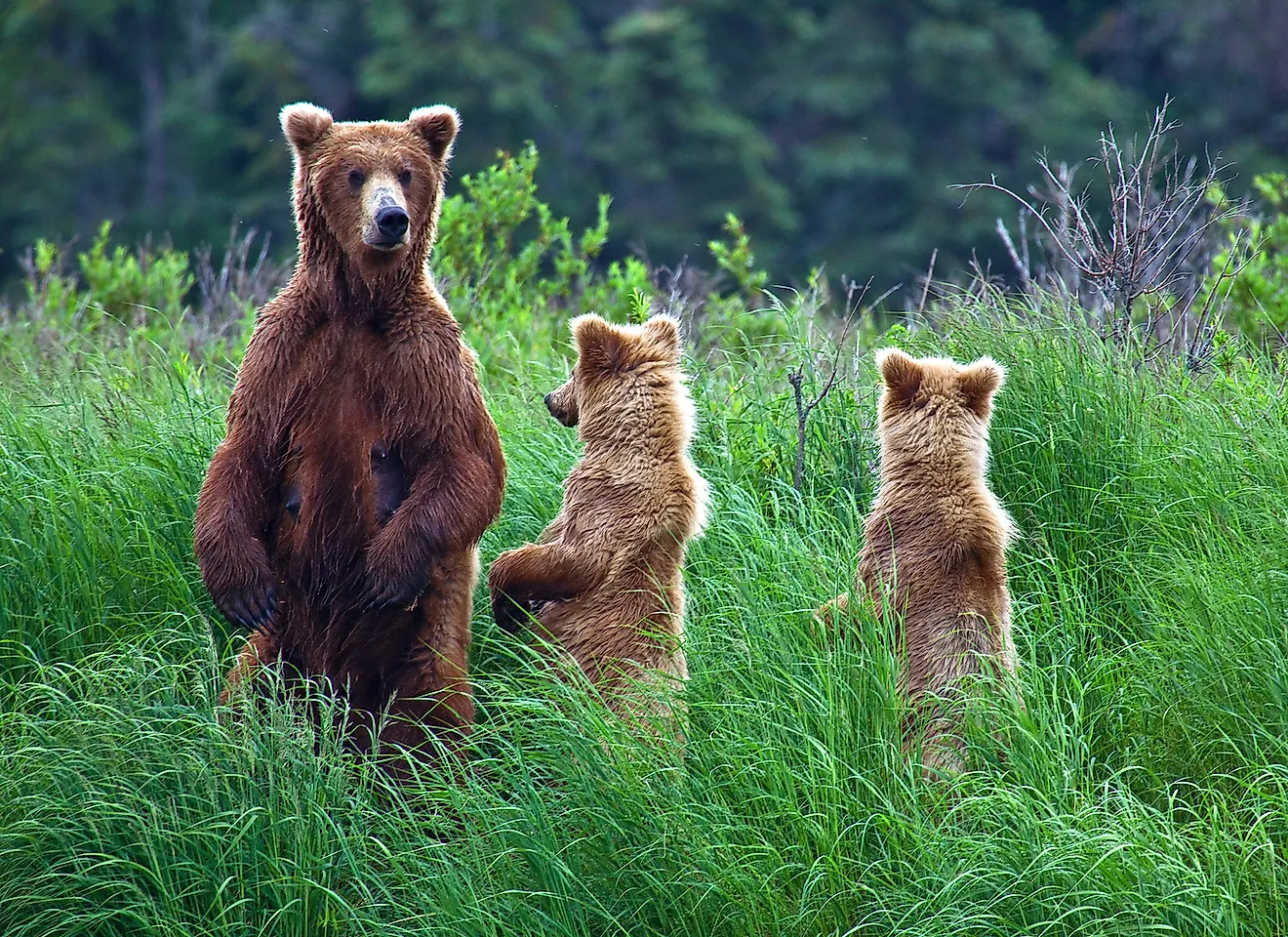
- Alaskan wild fauna is a hallmark of the far north, non-contiguous US state of Alaska.
- The iconic species of the Arctic region, the polar bear is establish in the northernmost permafrost-covered Alaskan territory.
- A large number of birds call Alaska their dwelling house. Many of them are migratory in nature who go out the region in winter for warmer grounds and are back in summer when the temperature is suitable for their living.
- The frigid temperatures of Alaska practice non back up a great multifariousness of amphibians and reptiles.
- Alaskan waters host a rich biodiversity of fish species. Trout, salmon, walleye pollock, halibut, whitefish, and lampreys are some of the fish species constitute in the ponds, rivers, lakes and seas of Alaska.
Alaskan wildlife is a authentication of the far north, non-contiguous US state of Alaska. The land boasts a rich avian diversity with well-nigh 500 species of birds, including the largest bald eagle population in the nation. It too hosts the brownish comport, 1 of the the biggest carnivorous land mammals living today, along with the polar bear. The groovy spawning migration of the salmon in the Alaskan waters, and the Porcupine caribou migrations (the longest migration among the earth's terrestrial mammals) are spectacular sights to behold hither. Alaska is teeming with wildlife and thus attracts thousands of tourists to this US country. Here are some of Alaska'southward most iconic creatures.
1. Polar Deport
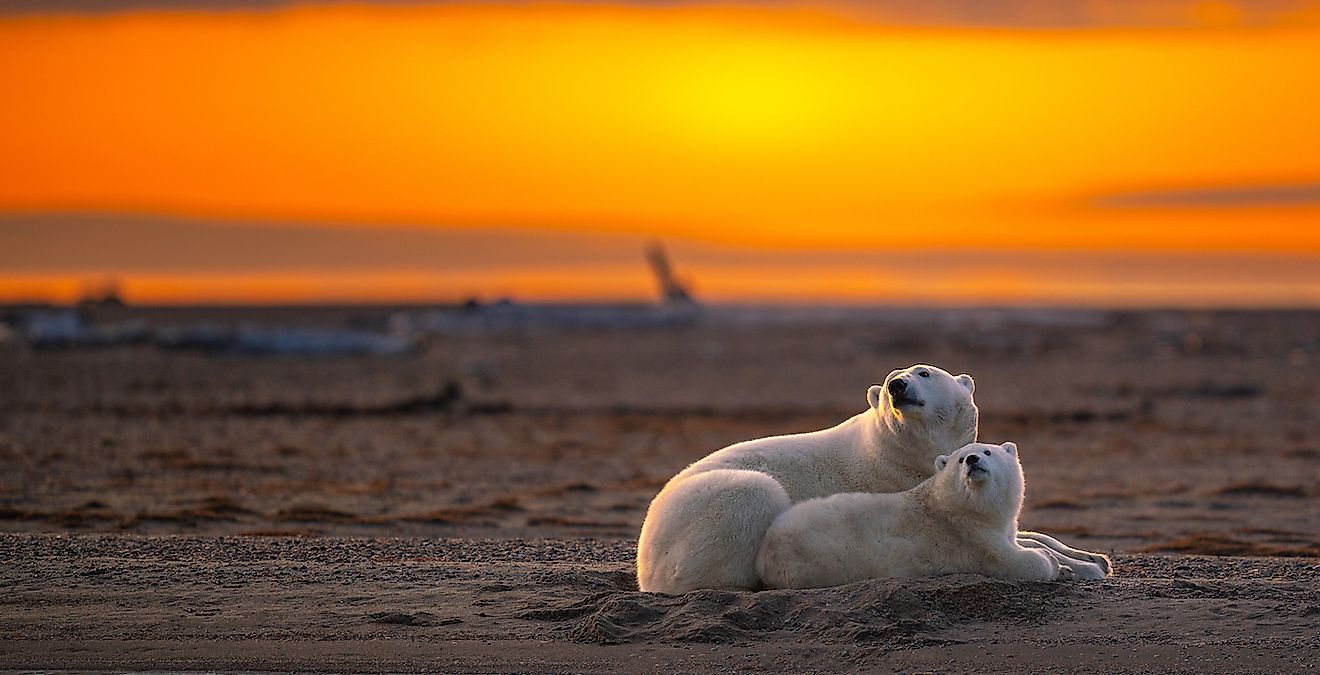
The iconic species of the Arctic region, the polar bear is found in the northernmost permafrost-covered Alaskan territory. These bears are large creatures, weighing effectually 775 to ane,200 lbs (351 to 544 kg). They are well-adjusted to live in the frigid temperature of their habitat and spend a large part of their lifetime in the sea ice where they hunt for seals, their primary source of food. Currently, the polar bears are classified every bit vulnerable by IUCN, with the populations decreasing. Habitat loss and climatic change are the biggest threats to the continued survival of these animals.
two. Brown Acquit
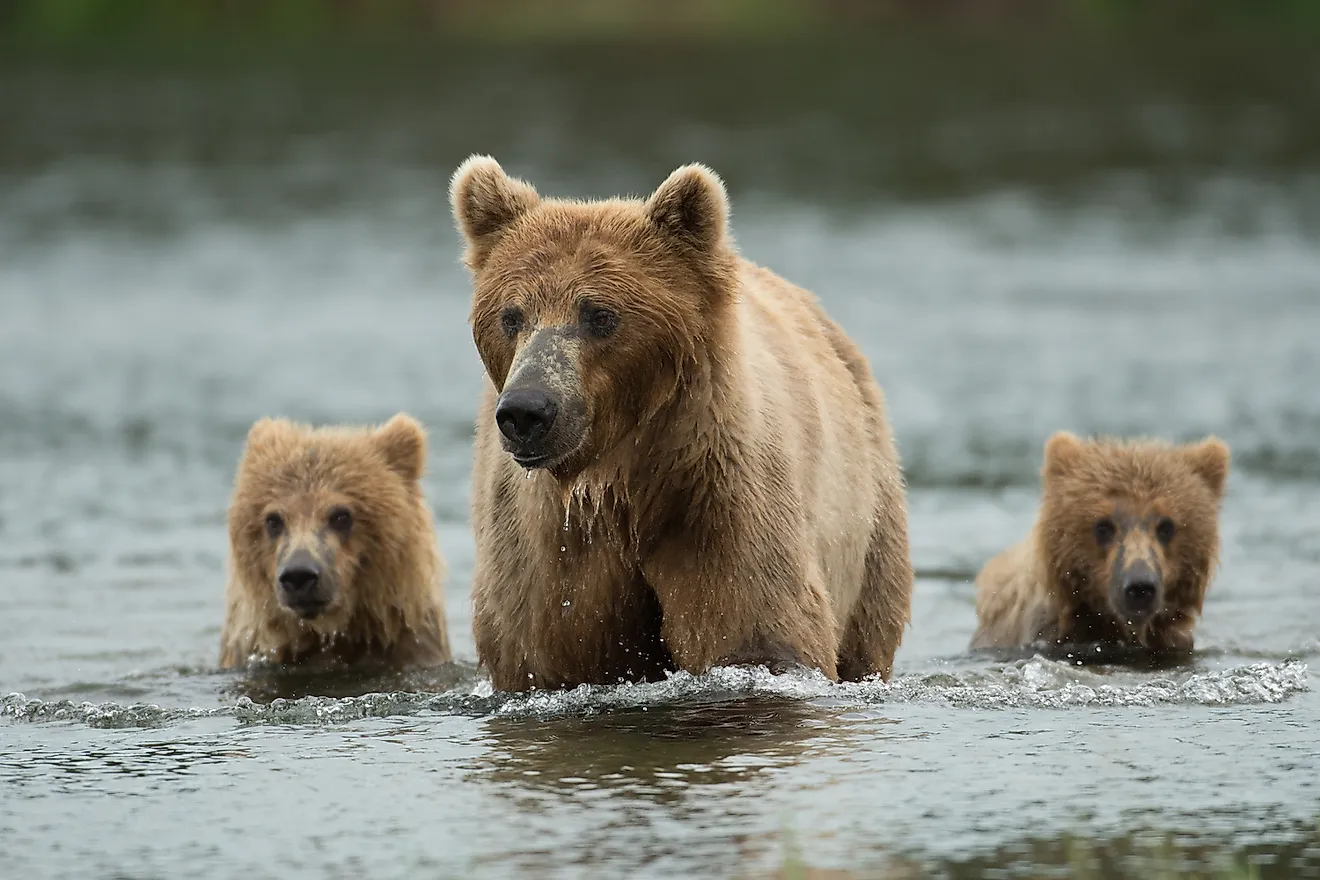
A large number of dark-brown bear subspecies inhabit Alaska. These bears are omnivorous or cannibal in nature, and some like the grizzly bear are known to be aggressive. These bears grow to attain large sizes, the largest of almost species of bears. The brown bear subspecies establish in Alaska include the Alaska brown acquit, Dall Island brownish comport, the grizzly bear, Kodiak bear, and the Sitka brown bear. Brown bears in Alaska are currently non threatened and are subjected to regulated hunting to maintain their stable populations.
3. Black Bear
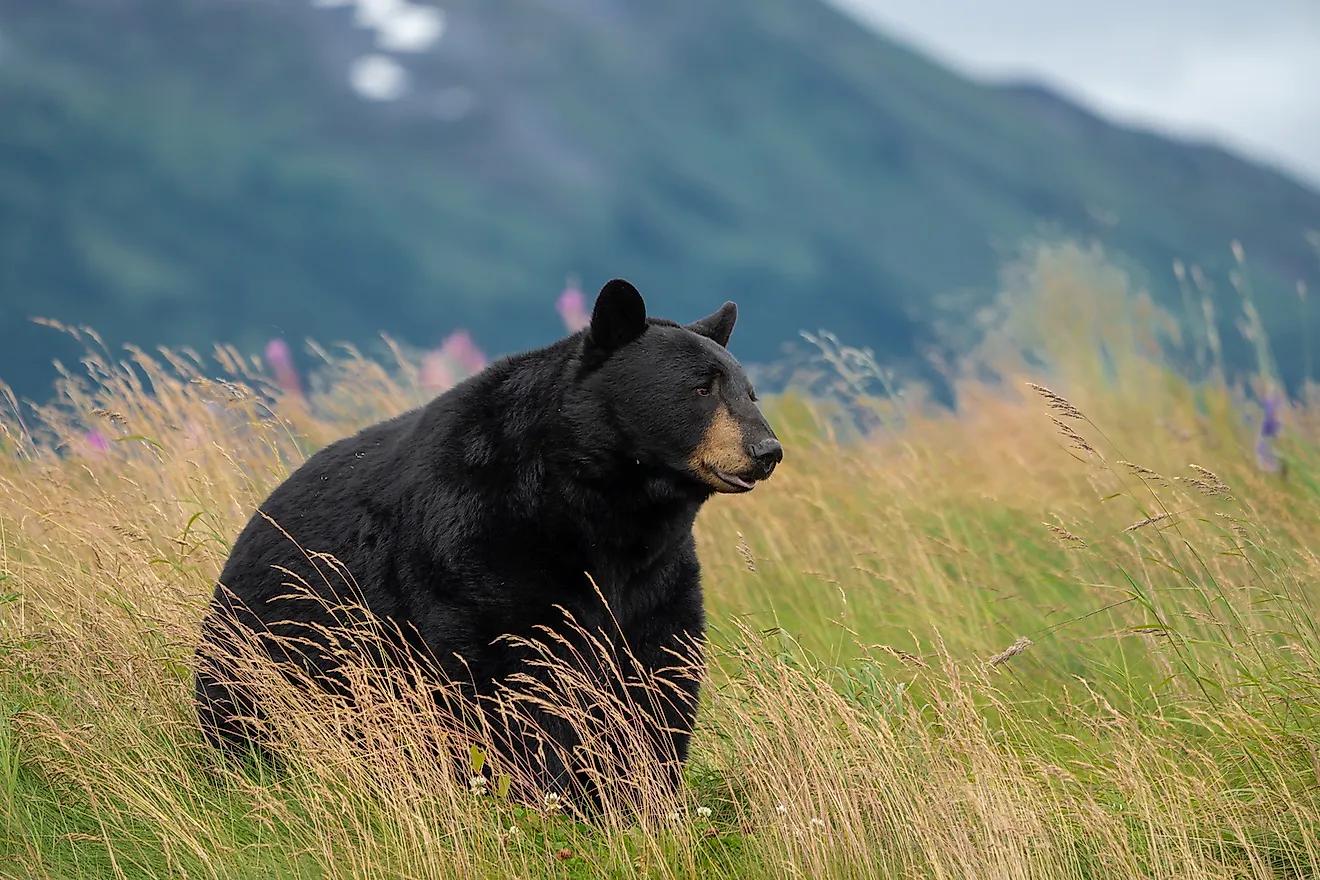
American black bears are one of the least threatened behave species institute in the world. A number of subspecies of this bear are found distributed across distinct ranges of North America. In Alaska, the subspecies found are the Eastern blackness bear, Haida Gwaii blackness bear, glacier carry, Kenai black carry, and Dall black bear. These bears are omnivorous in nature and often go out the forests in search of like shooting fish in a barrel food in man communities. Thus, frequent reports of human confrontations with the black behave exist.
4. Bison
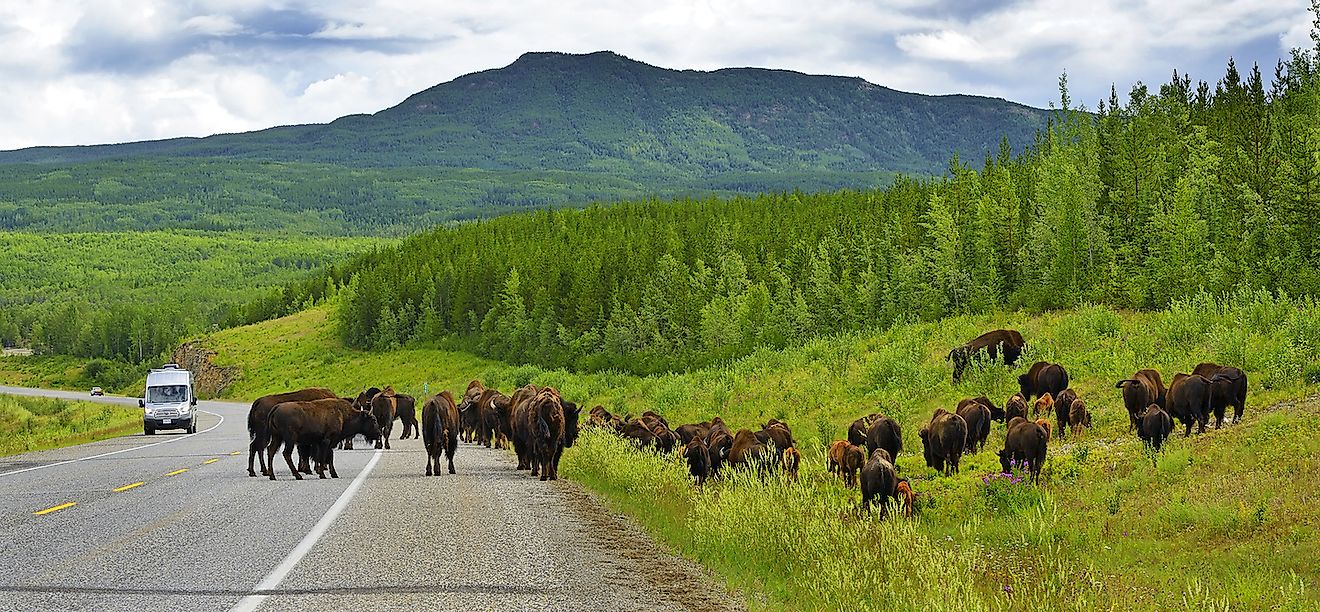
The wood bison, an American bison subspecies, is found in the boreal forests of Alaska. These animals are larger than the plains bison. This subspecies is currently designated equally near threatened past IUCN. Indiscriminate hunting, loss of habitat, and hybridization upon mating with the plains bison have led to the rapid decline in the number of this subspecies of bison.
five. Caribou
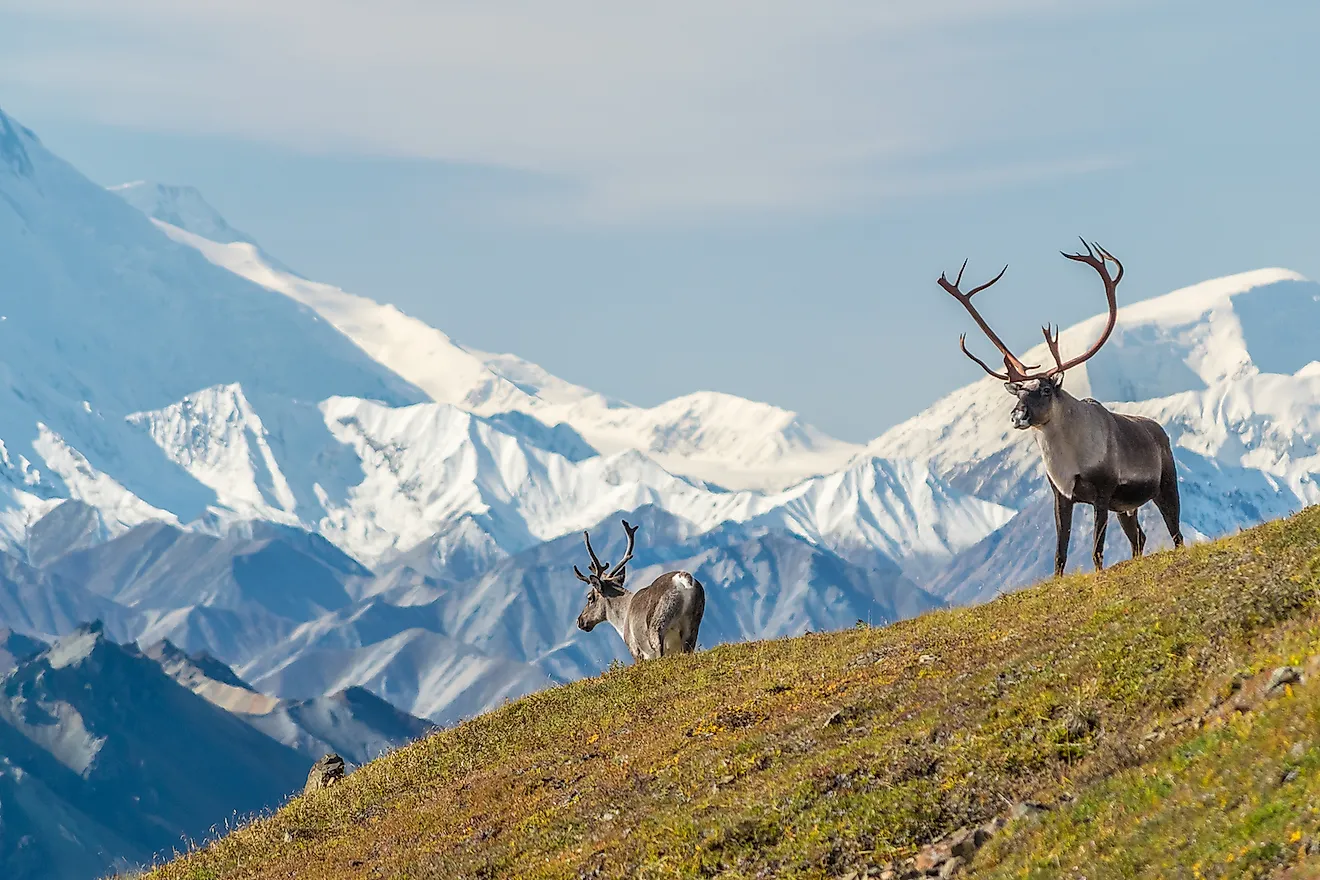
The Porcupine caribou is a caribou subspecies. These animals live in large herds of approximately 169,000 animals. They migrate for long distances, well-nigh ane,500 miles (2,400 km) from their wintering grounds to their calving grounds virtually the Beaufort Sea, ranging from Alaska to the Canadian territory of Yukon. Thus, the Porcupine caribou exhibits the longest state migration among the terrestrial mammals of the world. They are named afterwards a tributary of the Yukon River chosen Porcupine River.
6. Moose
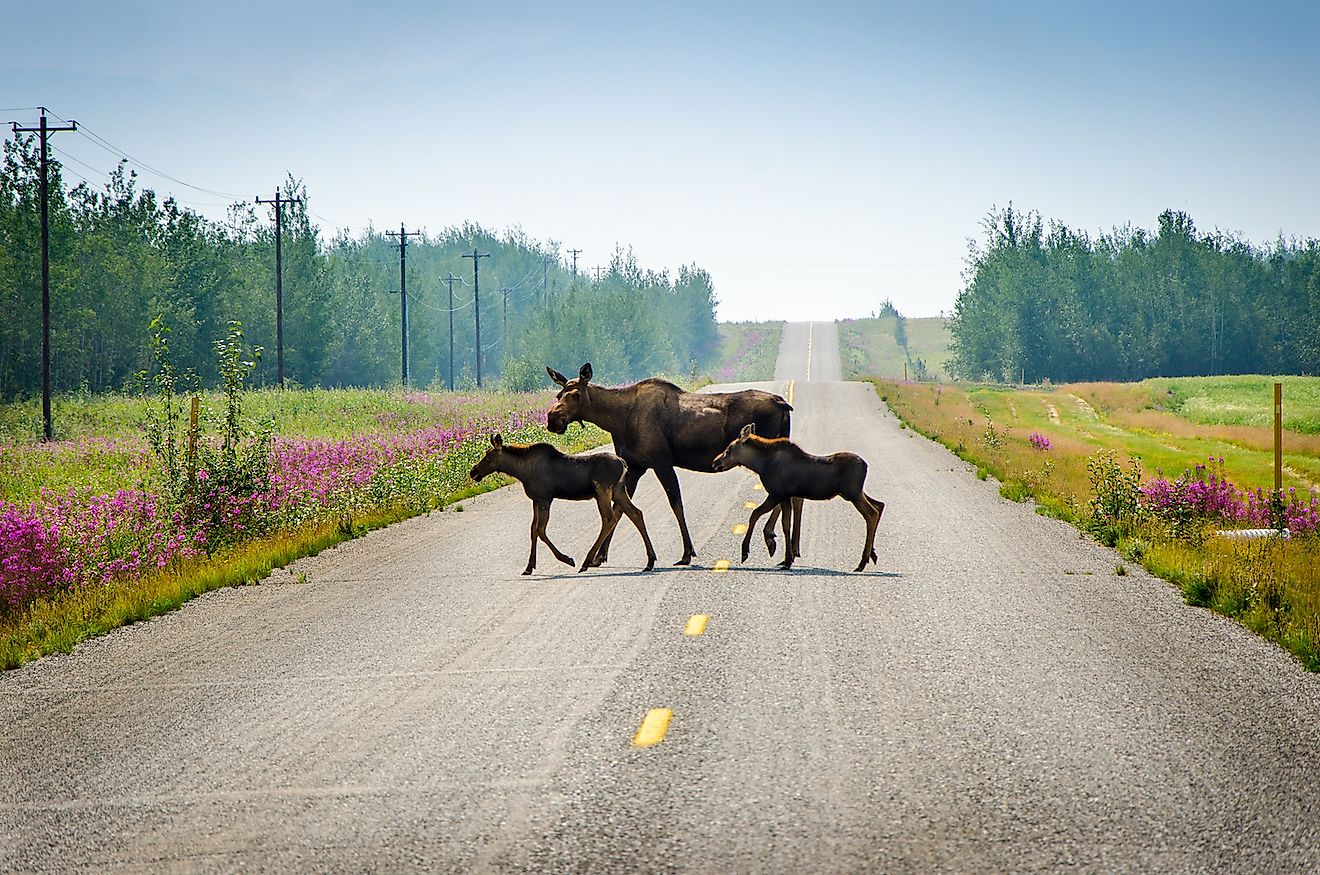
The Alaska moose have a wide range beyond Alaska where they inhabit the boreal and mixed deciduous forests of the Us state. It is the largest of the North American moose subspecies. These animals are normally lone in nature, coming into contact with each other during the mating season in fall and wintertime. During this period, they might be ambitious and could assault humans when confronted. Currently, there are well-nigh 225,000 individuals of this species in Alaska, and they are systematically hunted every twelvemonth to keep their population in check.
7. Mount Goat
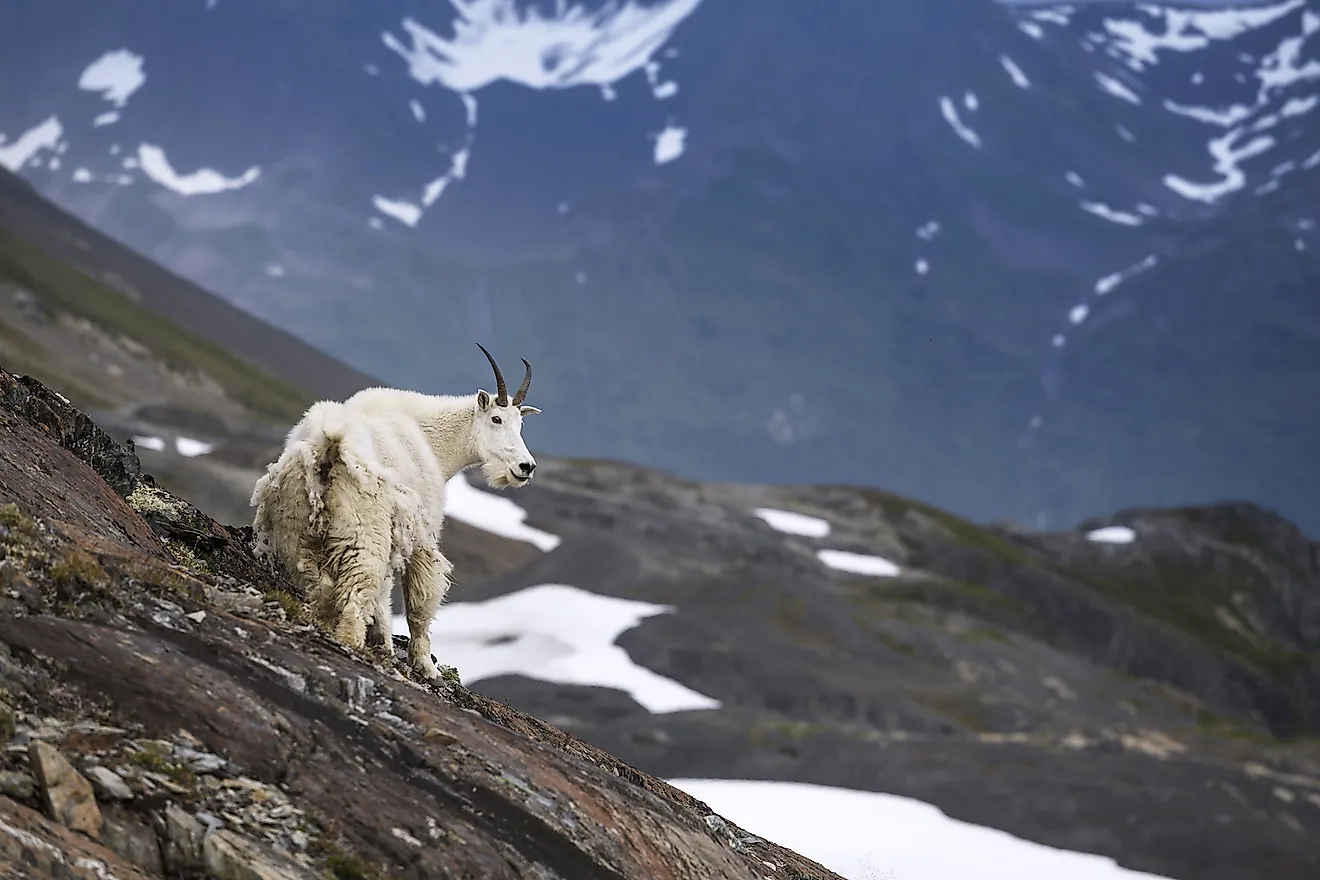
Mountain goats abound in the mountain ranges of southeastern Alaska. These goats can be found at altitudes as high as 13,000 anxiety in a higher place bounding main level, or even higher. Their white, thick woolly coat protects them from the extreme atmospheric condition of their habitat. The goats have long, black horns, beards, and brusk tails. They feed on lichens, mosses, sedges, grasses, and other plant affair. They rarely migrate to lower levels. Bears, wolves, lynxes are some of the predators of these goats. Mountain goats are stocky creatures, with the males weighing 176 to 220 lbs (80 to 100 kg) and stand up xl inches alpine to the shoulder.
8. Dall Sheep
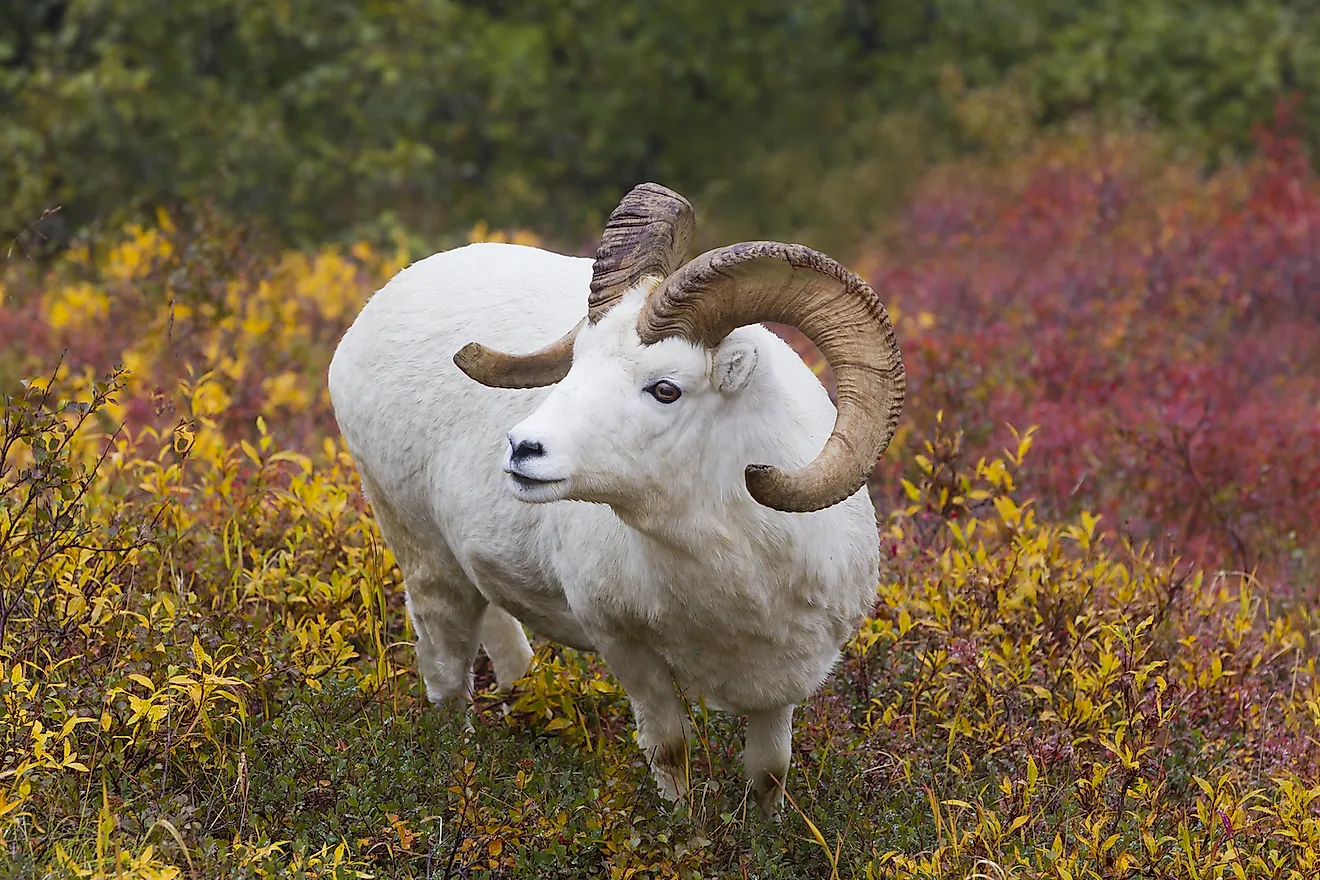
Dall sheep are constitute in the subarctic mountain ranges of Alaska. These sheep have curved xanthous brown horns and a slate brownish or white colored coat. Equally herbivores, they have enough of nutrient supply during summer but during winter, they sustain themselves on moss, lichen, and frozen plants. Grizzlies, coyotes, and black bears are some of the predators of the Dall sheep.
nine. Whales
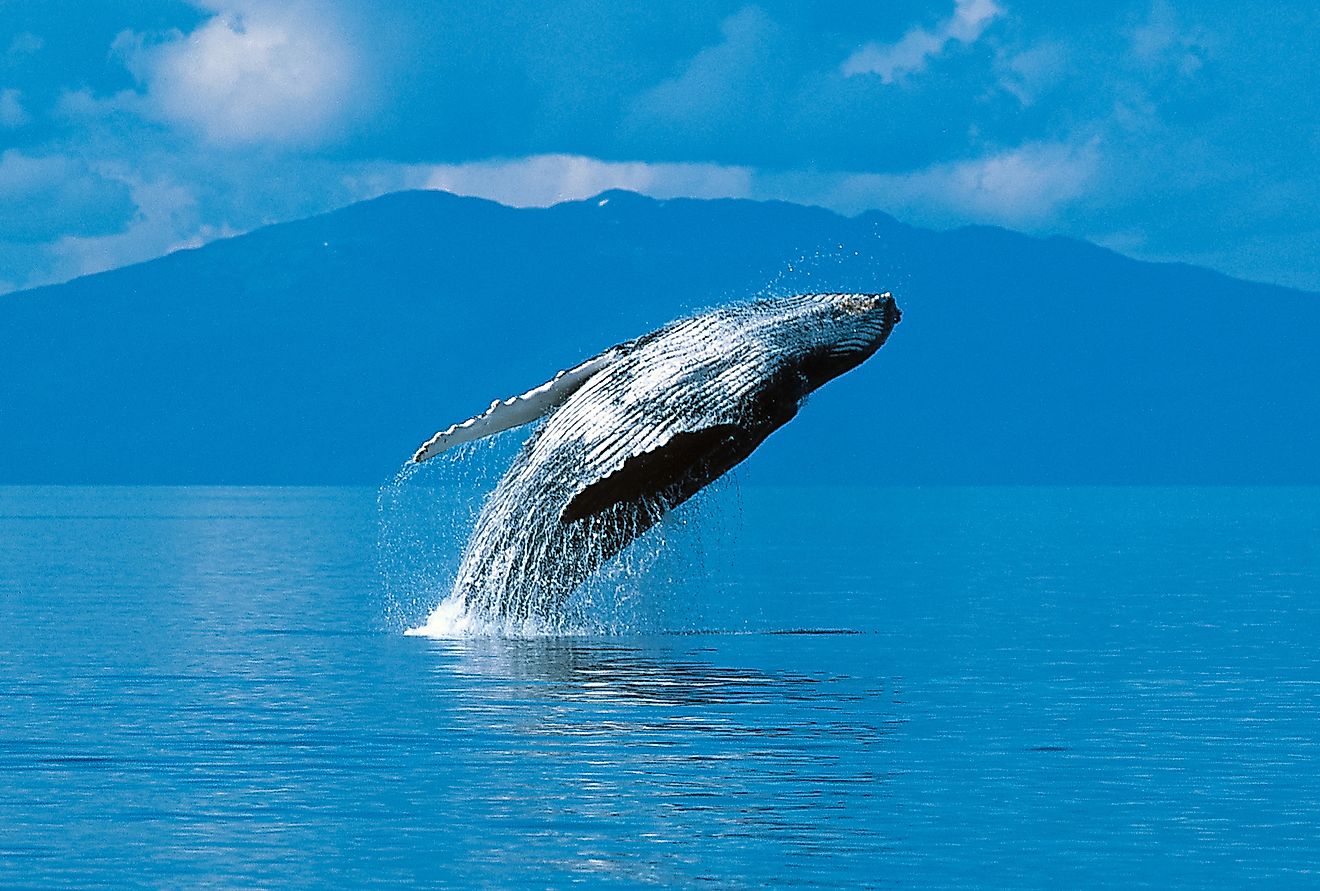
Amongst the animals that live in Alaska are several species of whales that grow in the surrounding seas and oceans. Sightings of the humpback whale, fin whale, sei whale, blue whale, bowhead whale, and North Pacific correct whale have been reported in Alaskan waters. Many of these species of whales are in the threatened category of the IUCN Reddish List. Many factors including death by bycatch, poaching for meat and body parts, capture for display in marine parks, loss of casualty species, marine pollution, and climate alter are responsible for the loss of whales from the world's oceans.
10. Orca
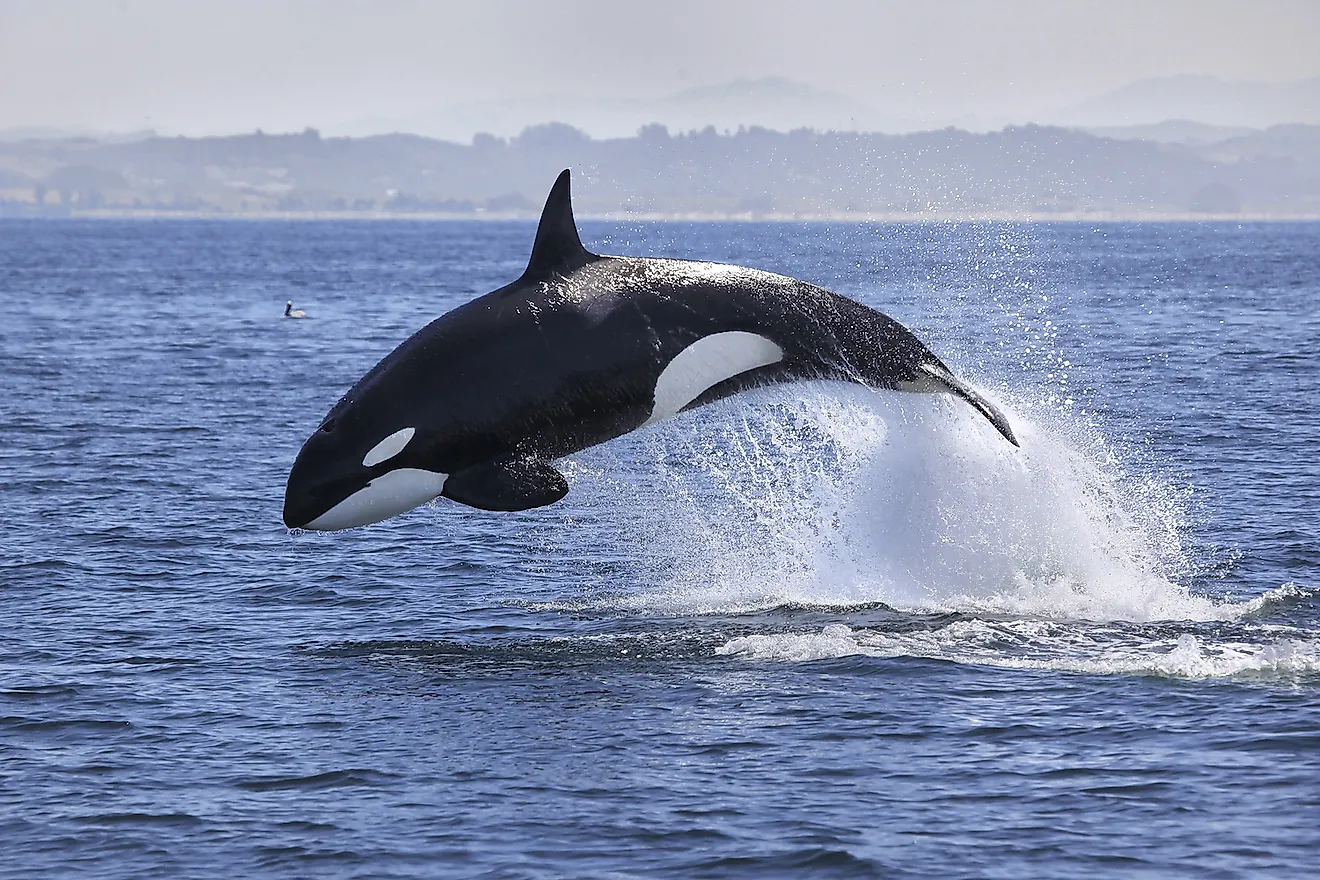
One of the about prominent and popular sea creatures is the orca. A fellow member of the oceanic dolphin family unit, orcas or killer whales are noon predators, significant they take no predators above them in the food chain. Orcas have a widespread distribution across the seas and oceans of the globe and are besides sighted in the Gulf of Alaska. These animals feed primarily on fish simply might also consume other mammals like dolphins and whales. Though sufficient data on the global orca population is not bachelor, conservationists concur that such populations are in danger due to hunting, pollution, casualty depletion, and capture for display in marine parks.
eleven. Turtles
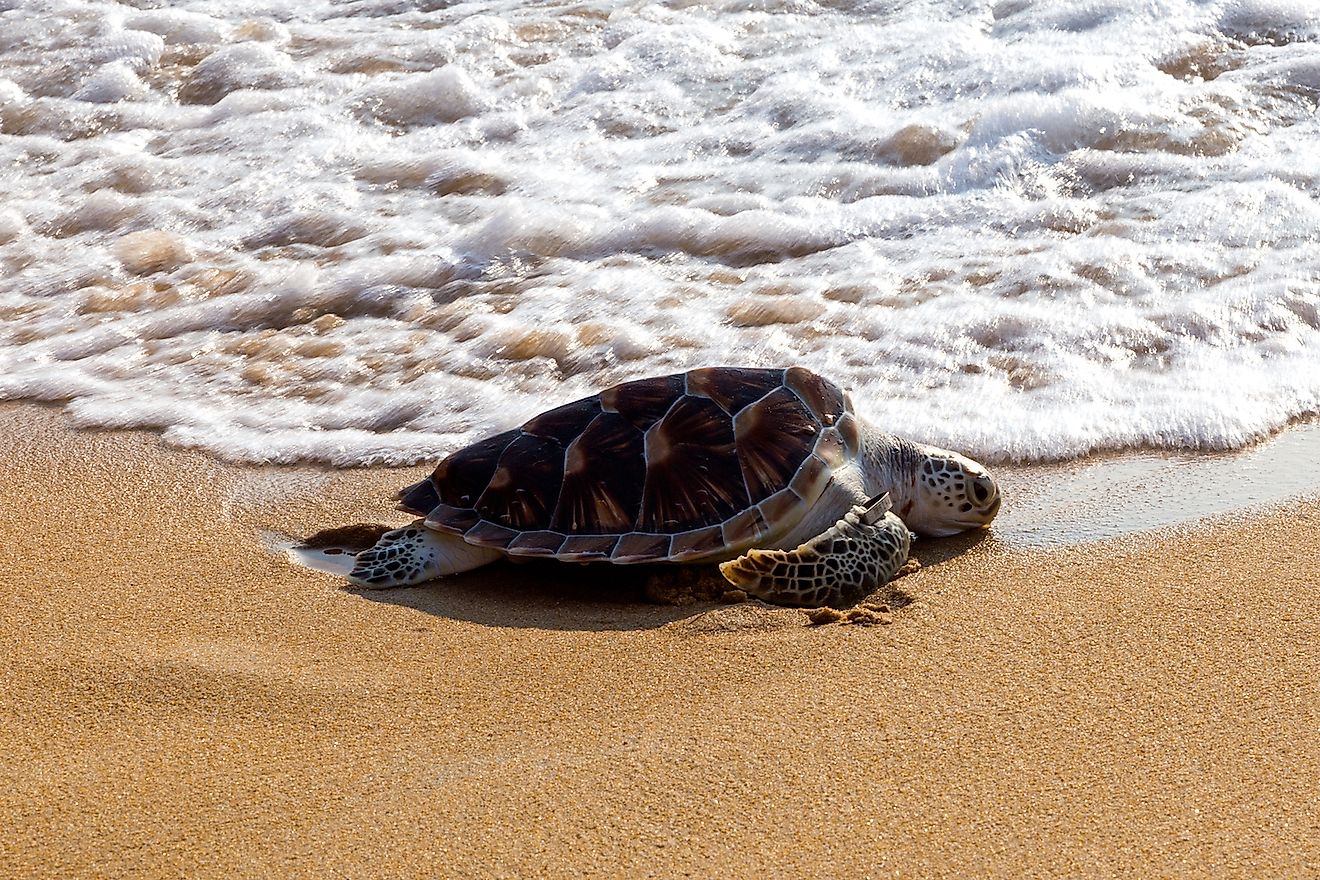
Ii species of turtles, the green sea turtle and the leatherback sea turtle are found in the coastal waters of Alaska. The former are named so for the green colour of their body fat and different the common belief have a black/olive-colored shell. The latter is the fourth largest living reptile and the largest amid all species of turtles. The leatherback turtle has a carapace covered past oily mankind and pare. These leatherbacks are classified as vulnerable by IUCN, and the light-green ocean turtle is endangered. Hunting for meat, extraction of turtle eggs, and expiry as bycatch during marine fishing activities, are some of the reasons responsible for the rapid decline in sea turtle populations.
12. Birds Of Alaska
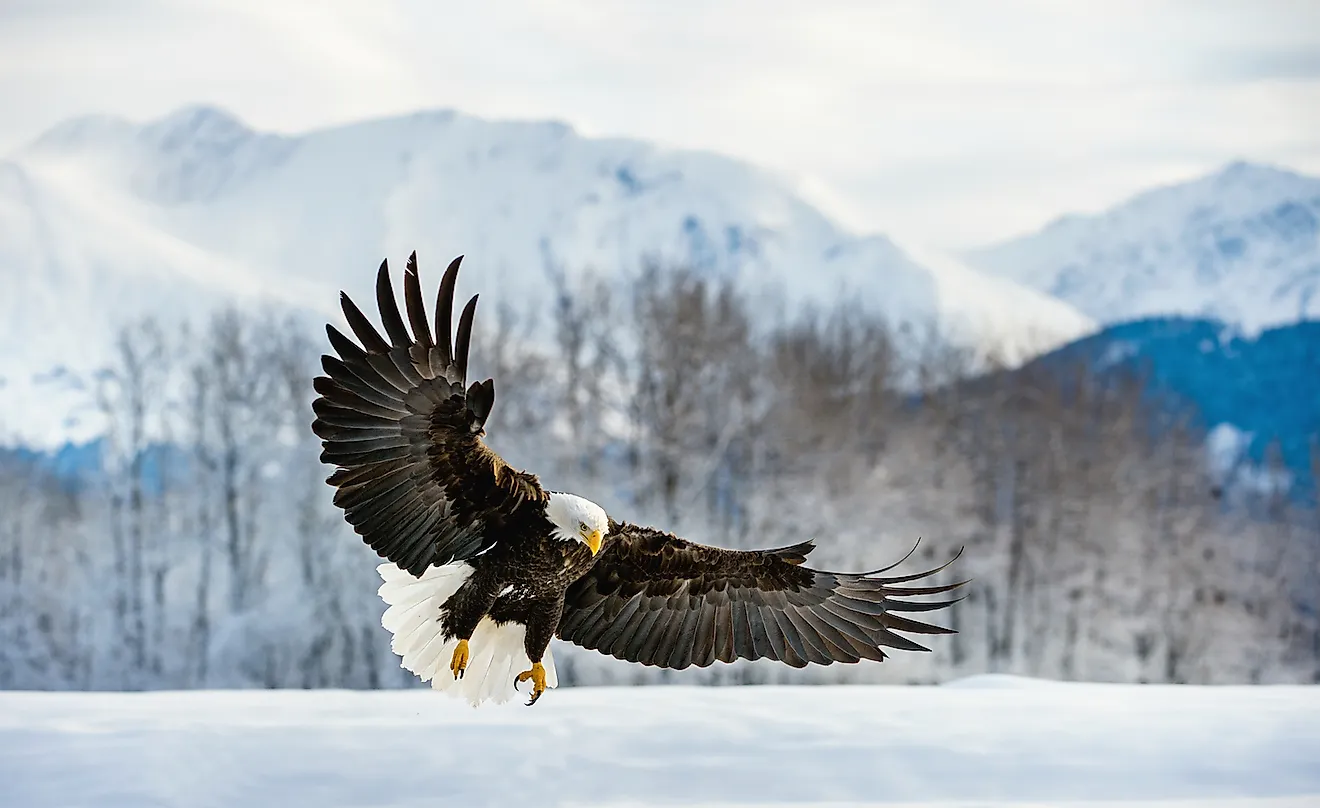
A large number of birds call Alaska their home. Many of them are migratory in nature who leave the region in winter for warmer grounds and are back in summer when the temperature is suitable for their living. Ducks, geese, and swans like the taiga bean goose, Canada goose, tundra swan, long-tailed duck, and other birds are found in the Alaskan wetlands. Turkeys, grouse, partridges, and quails like the ruffed grouse, and willow ptarmigan, are also found here, amidst others. Loons, grebes, albatrosses, petrels, cormorants, pelicans, herons, nightjars, tyrant flycatchers, egrets, eagles, and vultures, are some of the other classes of birds found in Alaska.
13. Amphibians Of Alaska
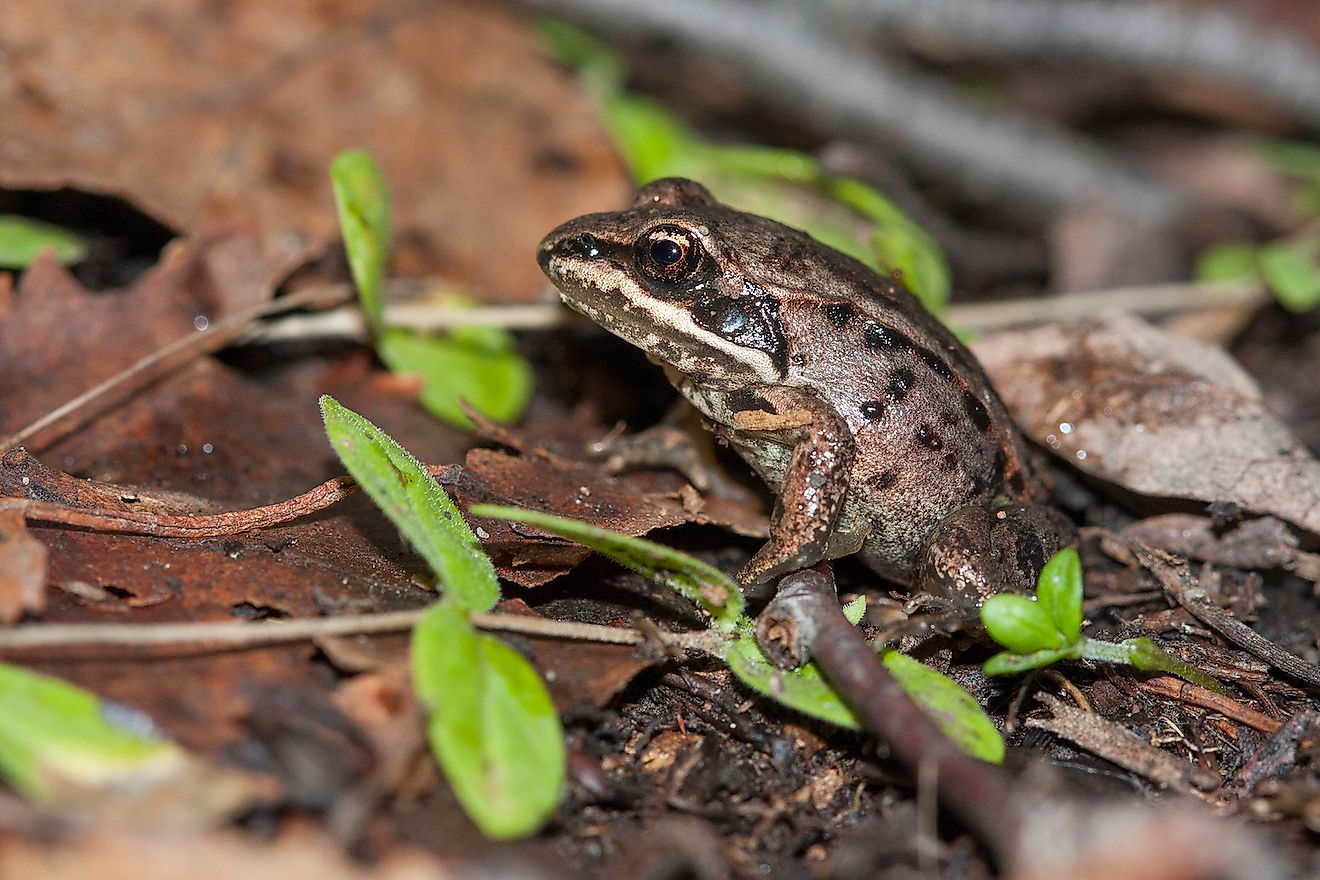
The frigid temperatures of Alaska do not back up a not bad variety of amphibians and reptiles. Only 2 species of frogs, the wood frog, and the Columbia spotted frog are spotted here. Three species of salamanders and ane species of toad likewise call Alaska their home. These creatures are usually found near permanent water bodies as they spend a meaning part of their life in the water.
14. Marine And Freshwater Fish
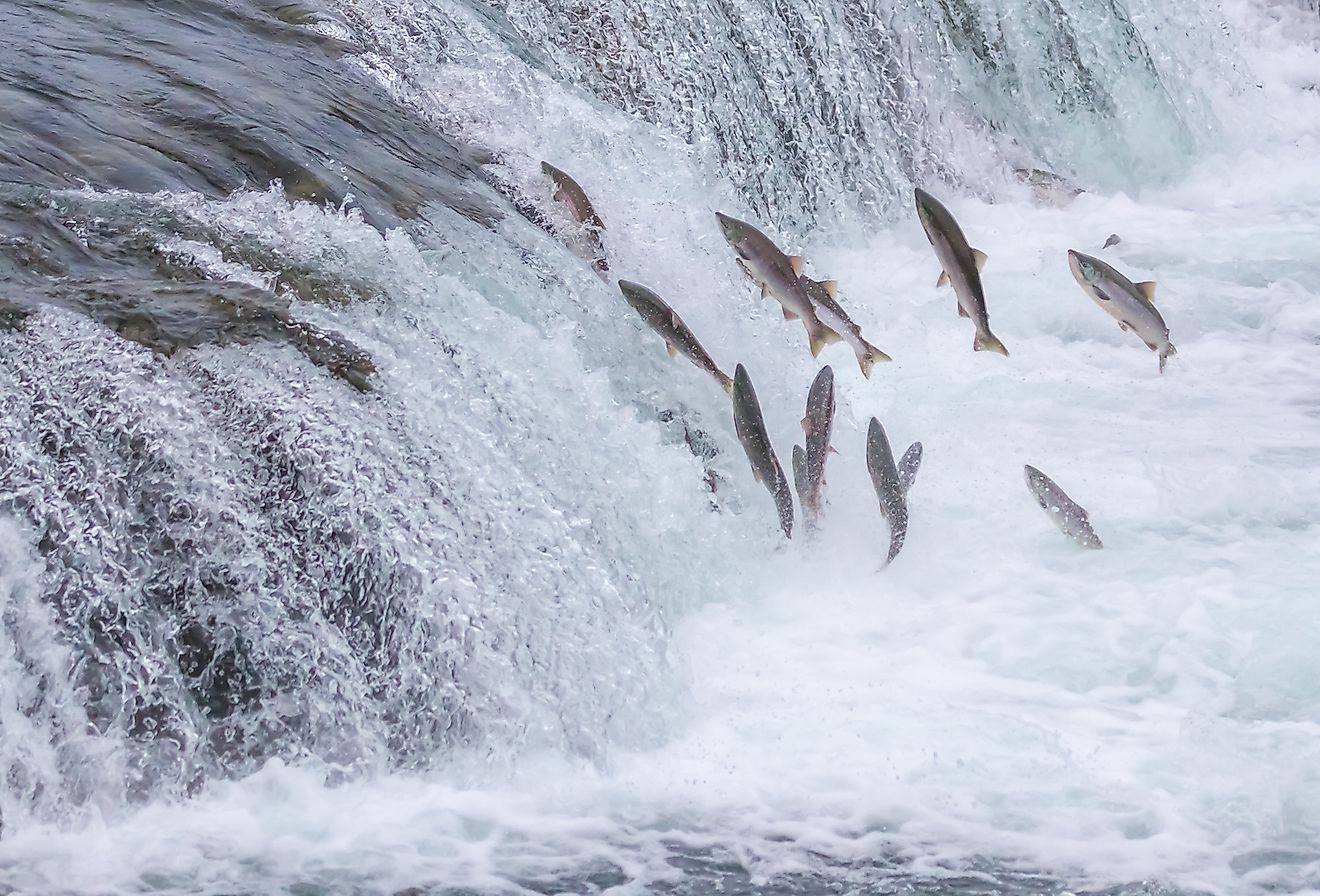
Alaskan waters host a rich biodiversity of fish species. Trout, salmon, walleye pollock, halibut, whitefish, and lampreys are some of the fish species found in the ponds, rivers, lakes and seas of Alaska. A unique issue, the bang-up spawning migration of the salmon, takes place every year in the waters around this US state. A migration of big flocks of salmon travels from the ocean to the rivers, moving upstream against the river currents for spawning purposes. The salmon tin frequently be seen jumping above the waters in an effort to overcome the force of the river currents. Chocolate-brown bears take advantage of this upshot and enjoy salmon feasts during this fourth dimension.
Source: https://www.worldatlas.com/articles/what-animals-live-in-alaska.html
Posted by: bowlertheabsitters.blogspot.com

0 Response to "How Many Animals Live In The Taiga"
Post a Comment